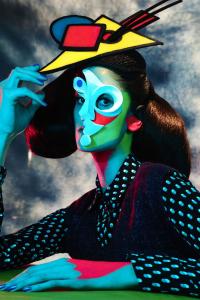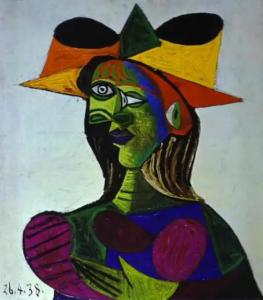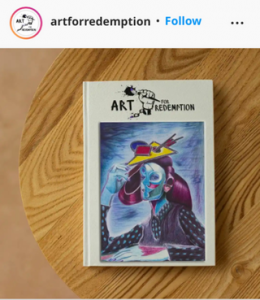What About Paula Picassa?
"What About Paula Picassa?," looks critically at the critics calling for Pablo Picasso to be canceled, and is this to include the works he inspired?
SILICON VALLEY , CALIFORNIA, UNITED STATES, April 11, 2023/EINPresswire.com/ -- This summer, June 2 - September 24, 2023, at the Brooklyn Museum will be the exhibition "It’s Pablo-matic: Picasso According to Hannah Gadsby." The exhibition examines Picasso's complicated legacy through a critical, contemporary, and feminist lens, even as it acknowledges his work’s transformative power and lasting influence.It’s Pablo-matic showcases nearly one hundred works, including pieces by Picasso and selections by twentieth- and twenty-first-century women artists such as Cecily Brown, Renee Cox, Käthe Kollwitz, Dindga McCannon, Ana Mendieta, Marilyn Minter, Kiki Smith, May Stevens, and Mickalene Thomas. Highlighting Gadsby’s voice alongside those of many of the included artists, the exhibition reckons with complex questions around misogyny, creativity, the art-historical canon, and “genius.”
This exhibition is organized by the Brooklyn Museum in collaboration with the Musée National Picasso-Paris and is part of a global presentation of exhibitions and events marking the fiftieth anniversary of Pablo Picasso’s death: Picasso Celebration 1973–2023.
Alex Needham, Art Editor at The Guardian, compiled a list of collectors, artists, critics and curators to decide if Pablo Picasso should be canceled, and published their response in the April 7, 2023, edition of The Guardian, "‘Notoriously cruel’: should we cancel Picasso? Collectors, artists, critics and curators decide."
Picasso said, “You can have all the perspectives at once!” What a hero. But tell me, are any of those perspectives a woman’s? Well, then I’m not interested. —Hannah Gadsby
"What About Paula Picassa?," dares to ask, should this be the feminist gold standard on which to judge works created by others, who have been inspired by Picasso?
The Guardian's Art editor informs us of the following:
Eight years on, the reputation of Picasso – the Pablo in question – might not quite be as comprehensively trashed as West’s, but it has nosedived nonetheless. When Picasso died at the age of 91, 50 years ago tomorrow, the Guardian called him the most influential artist of the 20th century. Today, Picasso is more often talked about as a misogynist and cultural appropriator, the ultimate example of problematic white guys clogging up the artistic canon.
His appeal is as a picaresque who left a trail of betrayals and suicides. He is vampire, sociopath and narcissist
This summer, the Brooklyn Museum will mount an exhibition called It’s Pablo-matic (geddit?), co-curated by Hannah Gadsby, whose 2018 standup special Nanette includes a riff on how much the Aussie comic hates Picasso. (“Cubism. All the perspectives at once! Any of those perspectives a woman’s? No! You just put a kaleidoscope filter on your cock.”) In Paris, meanwhile, the Picasso Museum has enlisted fashion designer Paul Smith to make the morally dubious genius more palatable to Gen Z.
Yet can Picasso’s torrential output – 14,000 paintings and drawings; 100,000 prints; 24,000 book illustrations; 300 models and sculptures – really be cut down to size in this way? Do his offensive views outweigh masterpieces like Guernica? Does Picasso’s undeniably terrible treatment of women mean that we can cast aside the quantum leaps that shifted the course of art? We asked critics, artists, collectors and curators for their verdicts.
THE DEVALUATION OF HARD WORK
The hatred for Picasso stems from his output, and is reminiscent of the backlash to Sheryl Sandberg's book "Lean In."
In a 2016 piece for the Times, Judith Shulevitz elaborated further, with thoughts on how to fix feminism. Shulevitz also quoted feminist Sarah Leonard who wrote, in her book, The Future We Want: “If feminism means the right to sleep under my desk, then screw it.”
While hilarious, the kind of monstrous output by Picasso shouldn't be dismissed, but lauded. Hard work has a price, a work ethic has a price, and output will most likely mean you will win the race.
In jest, The Guardian notes, "In Paris, meanwhile, the Picasso Museum has enlisted fashion designer Paul Smith to make the morally dubious genius more palatable to Gen Z."
Gen Z'ers aren't looking to fashion designers to figure out how to navigate and influence the world, and what is palatable and what isn't, but to foreign born American Social media master and entrepreneur Gary Vaynerchuk, aka Gary Vee.
Vaynerchuk no-holds-bar output, output, output, says "Quality is subjective," while he overwhelms the marketplace with content, content, content. While he is quick to point out to any firm looking to hire his marketing team, "If your product is crap, I'll only be amplifying that you sell crap," and yet, he still holds productivity over the inertia of perfection.
Picasso's work ethic, and output, and the intervening praise as the 20th century's artist would be the sweet spot for Gen Z'ers, but bear in mind, “If feminism means the right to sleep under my desk, then screw it," so it's not a course of action for everyone.
REVERSE MISOGYNY
Adrian Searle, Guardian art critic
"We see the Picasso who laid waste to women, who fed his art with body parts and turned lovers into parodic and pneumatic toys, caricatures of suffering. If not for his art, he’d just be another monster, treating women terribly."
‘Wanton disregard for the women he painted and slept with’
Eliza Goodpasture, critic
Picasso’s brand of greatness is characterised by loudness, scale, grit, originality, celebrity and overall shock-and-awe value. It is also distinguished by a macho, lusty masculinity. His notorious cruelty and misogyny are arguably as famous as his paintings.
Are these the voices of feminist cantor, we tear down Picasso, but hold in high esteem the Swiftees?
In the November 25, 2021, edition of An Injustice Magazine, "Taylor Slays Men With Her Music (Should Taylor Swift call out her ex boyfriends in her songs?)," writer Melissa Miles Carter will ask, "Is this what feminism looks like?"
Like Picasso's women, Swift verbally shreds and cuts to pieces her lovers. In her article, Carter notes, "Swift said recently that, to be honest, she’s not thought about how these songs affect these men."
It is this kind of callousness from Swift, that is reminiscent of the kind of cruelty being complained of in Picasso and his visual expression of his lovers through his art.
For those who are not aware, Carter points out that Swift had safety concerns from fans of another celebrity who had bad mouthed her. Carter writes, "It interests me that Taylor didn’t think of how these songs might affect the men she’d been with. She was very concerned about being bad-mouthed by Kanye in a song. She faced a lot of backlash from his fans at the time. So, why is she okay with the reactions from her fans about these men?"
Carter notes that these men have faced death threats from Taylor Swift fans. It is this indifference to not becoming just like the oppressor that had Carter wondering, "Is this what feminism looks like?"
CULTURAL MISAPPROPRIATION
Cultural misappropriation is an accusation that can become very harmful for those underrepresented classes of people trying to get their foot in the door.
In the fall of 2021, when luxury jewelry and specialty design house Tiffany & Co unveiled they owned a Basquiat, through a campaign ad featuring Jay-Z and Beyonce, the backlash was swift.
“They wouldn’t have let Jean-Michel into a Tiffany’s if he wanted to use the bathroom, or, if he went to buy an engagement ring and pulled a wad of cash out of his pocket. We couldn’t even get a cab,” says Basquiat collaborator Stephen Torton.
With many professing to want to have a seat at the table, is such criticism warranted? It only scares off the charity ball crowd from purchasing the works of the disenfranchised, lest they be accused of cultural colonialism.
‘Using Africa as inspiration made for great art’
Aindrea Emelife, curator at Edo Museum of West African Art, Lagos, Nigeria
One of my favourite works is Massacre en Corée, or Massacre in Korea, from 1951. But Picasso means more to me than favourites. As he looked to African art, via the Trocadéro in Paris, he saw a religious depth and ritual purpose that both startled and moved him.
‘He wears his imagination on his sleeve’
Aaron Curry, artist
Picasso still inspires young artists, because he worked through so many styles. He’s a textbook of freedom: “Hey, you can try all this stuff. Use your imagination – and push boundaries.”
As for the cultural appropriation, I think an artist’s job is to take culture and make something of it. It’s our job to appropriate. I don’t feel there should be rules saying: “There’s only a certain sort of material you’re allowed to use.” It’s not what artists do. They’re not politicians. Once something’s done, it’s out there for people to respond to.
WHAT ABOUT PAULA PICASSA?
Paula Picassa is a 2021, ink on paper drawing by American prison artist C-Note. It is a rendition of makeup artist Kabuki's fashion editorial in the September 2015 issue of Harper's Bazaar. Kabuki's editorial is called "Picasso's women." C-Note's drawing is based on Kabuki's selection of Picasso's 1938 work Bust of a woman.
Pablo Picasso's "Buste de Feme - Dora Maar - 1938, depicts the artist Dora Maar, Picasso’s lover and muse from 1936 to 1943. In 1999, the painting was stolen from Saudi billionaire Sheikh Abdul Mohsen Abdulmalik Al-Sheikh, who kept the painting aboard his yacht, Coral Island. 20 years later, Dutch investigator Arthur Brand recovered the work, and in 2019, the painting was valued at $25M USD.
Paula Picassa was created as a work for a Prisoner art coffee table book by Art for Redemption. Art for Redemption is a network of individuals seeking to connect and bridge friends, families, Prison Administrators, and other interested parties to create pathways of success from the “inside out” through art production.
Founded by ex-prisoner Buck Adams who believes there is a way to celebrate the artistic talent “inside” and to encourage financial accountability from the art producing inmates through the potential sale of their works towards paying restitution, child support, commissary, phone calls, J-Pay fees (institutional email), and even potentially be savings to support reintegration once released.
Paula Picassa is the cover art to Art for Redemption's Prisoner art coffee table book, and was a part of a series of works orchestrated by Art for Redemption to receive licensing fees for their work to be published in a series of email newsletters by the Marshall Project.
The Marshall Project is a nonprofit, online journalism organization focusing on issues related to criminal justice in the United States. It was founded in 2014, by former hedge fund manager Neil Barsky with former New York Times executive editor Bill Keller as its first editor-in-chief.
Despite the awesome inspiration of makeup artist Kabuki's work, for whatever reason, Harper Bazaar decided to cancel his Pablo Picasso inspired works in make-up. Deciding to keep the text of the article on their website, but removing all images of Kabuki's facial art.
ART FOR JUSTICE FUND
In 2017, Agnes Gund, American philanthropist, arts patron, collector, and social justice warrior, revealed she sold her 1962 Roy Lichtenstein’s Masterpiece for $150 million. An art sale placing it among the 15 highest works ever sold. In a move unprecedented in the Prison Art world, she set aside $100,000,000 to patronize the arts behind-the-wall, and encouraged other wealthy patrons to do the same with their Fine Art paintings. On this point, others have followed.
In 2017, her Art For Justice Fund was supposed to be a five-year initiative that aimed to turn art into action, but today it is a thriving philanthropic endeavor to raise awareness regarding America's addiction to mass incarceration. But left from this funding, have been prison artists such as C-Note.
C-Note, who is the world's most prolific prison-artist, has been an important voice through his works in raising awareness of the over incarceration of women.
Life Without the Possibility of Parole (2016), is a series of works, paintings, poems, and a play, that focuses on women serving a sentence of Life Without the Possibility of Parole.
Strange Fruit, (2017), depicts a woman who has hung herself in her prison cell. The Paintoem (painting + poem) was based on news reporting of the abnormally high suicides at one California women prison.
Today We Are Sisters, 2018, was a paintoem depicting the unification of women who are Pro-Life with women who are Pro-Choice in the cause to end, and then fight for reparations for California women prisoners who were being forcibly sterilized.
Today We Are Sisters was the first work of art to raise this awareness, and had a pivotal role to play in the $7M in reparations signed into California law in 2021.
Despite his visual and literary works generating millions in rehabilitative services and reparations, he has yet to see over $200.
"It's a fraud, this whole philanthropy, social signaling nonsense is a fraud," says MinisterKingXPyeface. MinisterKingXPyeface ought to know. After serving 24 years in both federal and state prison he came home pushing the mantra of an artivist. Setting up the Ratcliff Awards, and helping those on the inside sell their works, while trying to maintain the work as Director of California Prison Focus.
"The grant pool of money just keeps circulating amongst the same chosen few," says Nube Brown, an editor at the San Francisco Bay View.
To learn more, be sure to check out "It’s Pablo-matic: Picasso According to Hannah Gadsby," June 2 - Sept. 24, 2023, Brooklyn Museum, 200 Eastern Parkway
Brooklyn, New York 11238-6052; or for a great coffee table book, full of great art, by some of the finest prison artists in the United States, see the link below; or to contribute to C-Note, more information below is in the link, prints of Paula Picassa are available in the link, and to learn about the investment opportunities available in prison art, see the 5:00 min. YouTube video below, "Discover How Investing in Prison Art Can Make You a Smarter Art Investor."
A coffee table art book to reform the prison system – Art for Redemption
https://artforredemption.com/pages/coffee-table-art-book-for-prison-reform
Donald "C-Note" Hooker | JPay
http://www.jpay.com/FirstTime.aspx?InmateID=K94063&FacilityID=54&twUserID=0&a=M
Paula Picassa | Print
https://hubs.tellitapp.com/C-Note/post/95175150
ABOUT ANNA D. SMITH FINE ART AND REAL ESTATE BROKER:
Anna D. Smith Fine Art and Real Estate Broker in Silicon Valley, whose motto is "Fine Art needs a Home and a Home needs Fine Art ™," is a leading art advisory and brokerage firm, specializing in contemporary Underground art. In addition to its art services, the firm also provides real estate services related to buying and selling commercial or residential properties in Silicon Valley. With a reputation as the "Queen of the Underground Art World," founder Anna D. Smith has built Anna D. Smith Fine Art and Real Estate Broker into an art and real estate brokerage firm known for its expertise, professionalism, and commitment to client satisfaction.
Anna D. Smith
Anna D. Smith Fine Art and Real Estate Broker
+1 408-502-0102
email us here
Visit us on social media:
Twitter
LinkedIn
Instagram
YouTube
Other
Discover How Investing in Prison Art Can Make You a Smarter Art Investor
Legal Disclaimer:
EIN Presswire provides this news content "as is" without warranty of any kind. We do not accept any responsibility or liability for the accuracy, content, images, videos, licenses, completeness, legality, or reliability of the information contained in this article. If you have any complaints or copyright issues related to this article, kindly contact the author above.





